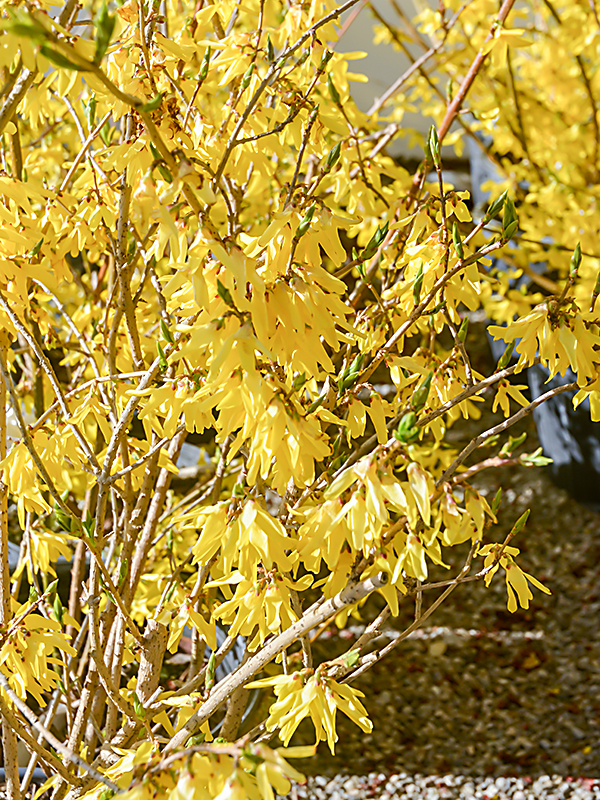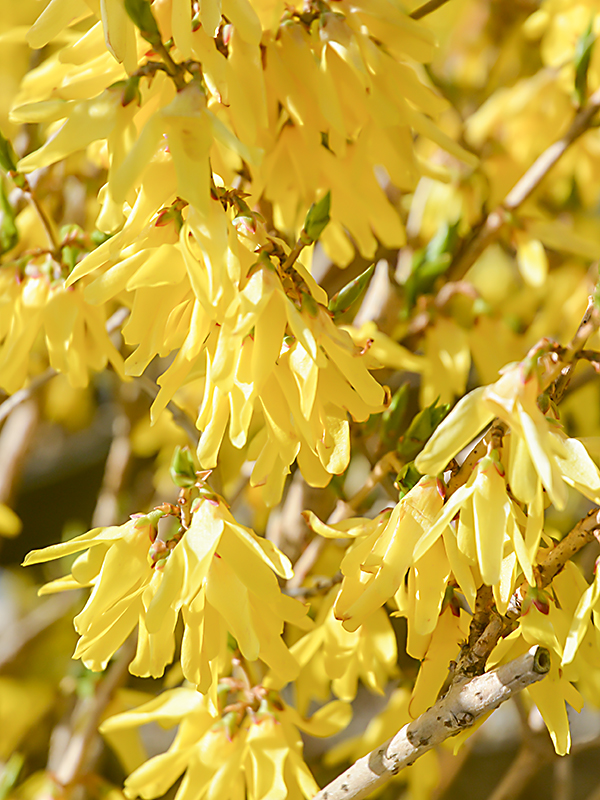| General Description | One of the earliest flowering shrubs producing a mass of small, bright yellow flowers before leaves emerge. After blooms die, the bright, shiny leaves are somewhat attractive, commonly used as a border planting. |
| ID Characteristic | Very easily identified when in flower by the mass of bright yellow blooms. After the flowering period it is more bland looking and harder to identify, but a primary clue to identification would be the largely unkempt appearance. |
| Shape | Bushy, wild looking form, stiff and spreading but tighter form than F. x intermedia |
| Propagation | Root softwood cuttings in late spring or early summer; or root semi-ripe cuttings in late summer or winter. Cannot be propagated by seed. |
| Cultivation | Prefers well-drained, fertile soil in full sun or light shade. Low tolerance for drought conditions; keep watered in summer. Below freezing temperatures are needed to induce flowering. Prune older wood immediately after flowering to encourage new wood growth; new wood bears more flowers than old. |
| Pests | Stem gall, dieback and leafspot, but rarely. Usually a very healthy shrub |
| Notable Specimens | The A.M. Cuddy Gardens, Strathroy, Ontario, Canada. |
| Habitat | Horticultural origin. |
| Bark/Stem Description | Bark is glabrous and gray-brown, covered in small, dark lenticels. |
| Flower/Leaf Bud Description | Buds are conical in shape and approximately 0.5 cm in length. Yellow-brown or greenish colour and often loosely scaled. Flower buds are more cold-hardy then straight species and many other cultivars. |
| Leaf Description | Simple, alternate, ovate and abruptly acuminate; either serrate or entire, glabrous and attached with a short, 1 cm petiole. 3.5 - 8.5 cm long, 3 - 6 cm wide. |
| Flower Description | Perfect flowers with 4, deeply lobed calyxes and corollas, a deep, golden shade of yellow, 3 cm long and up to 4 cm across; growing on new wood. Slender style with 2-lobed stigma, included stamens inserted at the base of the corolla. |
| Fruit Description | Two-celled fruit with dehiscent caps containing many winged seeds. No ornamental value. |
| Colour Description | Blooms before leafing so spring colour is pure yellow. Medium to bright green in summer with an unimpressive yellow-green autumn colour. |
| Texture Description | Medium texture when in leaf, wild and unkempt winter texture. |


